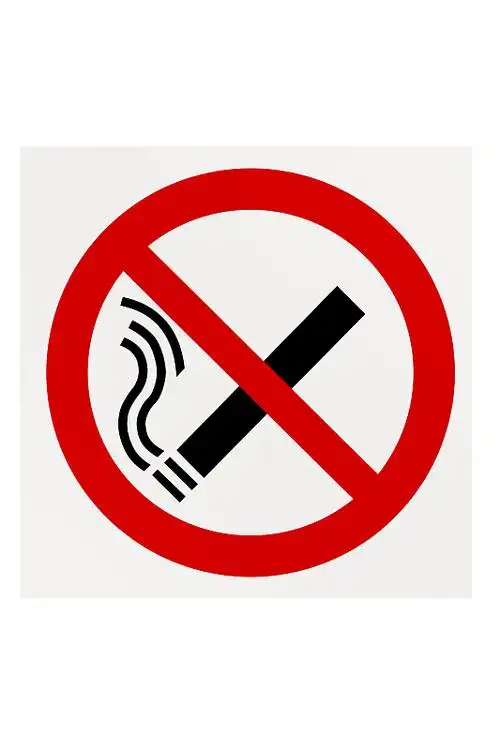The gentle morning light filters through the kitchen window, illuminating a familiar scene in countless households. On the counter, next to the cereal box, sits a pack of cigarettes. It seems like a small, personal choice, a moment of solace. But this choice casts a long, expensive shadow that touches every corner of family life. The financial strain of tobacco use is a silent, often ignored burden that compounds over time, creating a hidden tax on happiness, security, and future dreams. It's more than just the price of a pack; it's the cost of opportunities lost, security compromised, and well-being diminished.
Many smokers are acutely aware of the price per pack, a number they confront regularly. However, this is merely the tip of the iceberg. The true cost of smoking is a multi-layered problem that extends far beyond the checkout counter. To understand its full impact, we need to dissect the various ways it drains a family's financial resources. The first and most direct hit is the relentless drain of the purchase itself. Let's consider a smoker who goes through one pack a day. At an average price, this daily habit translates into a significant weekly sum. Multiply that by four weeks, and the monthly total becomes startling. Over a full year, this consistent spending adds up to a figure that could otherwise fund a family vacation, a down payment on a reliable used car, or a substantial contribution to a child's college savings plan. This is the most visible part of the financial pressure, the constant drip-drip-drip that empties the wallet.
But the financial implications don't stop there. The second layer involves the increased costs associated with health and home. Smokers often face higher premiums for health, life, and even home insurance. Insurance companies calculate risk, and the well-documented health risks of smoking translate directly into higher monthly bills. This is an ongoing, often overlooked expense that persists year after year. Furthermore, there are the costs of maintaining the habit itself—lighters, ashtrays, and the specialized "smoking jacket" or clothes that inevitably retain the smell. There's also the potential for property damage, such as burns on furniture, carpets, or car interiors, leading to costly repairs or replacements. These are the ancillary costs of tobacco use, the supporting cast of expenses that bolster the main actor.
Perhaps the most profound financial impact lies in the third layer: the opportunity cost. This is an economic concept for the benefits you miss out on when you choose one alternative over another. The money spent on cigarettes is not sitting in a savings account, quietly earning interest. It's not invested in a retirement fund, compounding over time to ensure a secure future. It's not being used to pay down high-interest debt, which would free up more money for other needs. This lost opportunity represents a double blow: the immediate loss of cash and the long-term loss of potential wealth and financial stability. The financial strain of smoking therefore isn't just about what is spent, but also about what is never gained.
The consequences of this financial drain manifest in tangible ways within the household. One of the first areas to feel the pinch is the family food budget. When disposable income is eroded by a fixed, non-negotiable expense like tobacco, the grocery budget often becomes a flexible one. Families may find themselves choosing cheaper, less nutritious food options to accommodate the cost of cigarettes. This creates a cruel paradox where money that could be spent on nourishing food is instead spent on a product that harms health. The same dynamic affects other essential areas. A parent might hesitate to sign a child up for music lessons, soccer practice, or a school trip because the funds have been allocated to the smoking habit. These are the quiet sacrifices that children may not understand, but they feel the limitation.
The stress of financial strain inevitably seeps into the emotional fabric of the family. Money is a common source of conflict in relationships, and when one partner's habit is perceived as draining shared resources, it can lead to resentment, arguments, and a breakdown in trust. The non-smoking partner may feel their hard work is going up in smoke, quite literally. This financial pressure can create a tense home environment, affecting the well-being of everyone, including children who are sensitive to parental stress. The habit, initially pursued for relaxation, becomes a primary source of discord and anxiety.
For families already living on a tight budget, the impact of tobacco spending can be catastrophic. It can be the difference between paying the utility bill on time or facing a disconnection notice. It can mean the choice between filling a necessary prescription or going without. This is where the financial pressure ceases to be an inconvenience and becomes a direct threat to the family's basic welfare. The relentless nature of the expense leaves no room for error, no buffer for unexpected emergencies, trapping families in a cycle of financial precarity.
Breaking free from this cycle requires a shift in perspective and a practical plan. The first step is gaining true awareness. Many people are in a state of denial about the total cost. A powerful exercise is to calculate the annual and lifetime cost of the habit. Use an online "cost of smoking calculator" to see the staggering total. Seeing a number that could represent a new car, a significant home renovation, or a large investment portfolio can be a powerful motivator. This isn't about inducing guilt; it's about revealing potential. It's about visualizing a different future for that money.

Once the financial reality is clear, the next step is to create a visual motivation system. Get a large glass jar and label it with a specific, desired goal—"Family Beach Trip," "New Laptop," "Debt Freedom Fund." Every day, physically place the equivalent amount of money you would have spent on cigarettes into the jar. Watching the money accumulate visually reinforces the positive benefit of quitting. It transforms an abstract concept into a tangible reward, providing immediate positive feedback that the body's nicotine cravings will try to negate.
Managing the financial windfall of quitting is crucial. The money saved shouldn't just disappear into the general budget. To truly reverse the financial pressure, it should be allocated purposefully. A highly effective strategy is to automatically transfer the daily average savings into a separate savings or investment account. This "pay yourself first" approach ensures the money is building a brighter future rather than being frittered away. Many former smokers use the funds to aggressively pay down credit card debt, which is one of the best financial returns on investment possible due to high interest rates. Others start a college fund for their children or boost their emergency savings, creating a buffer that brings immense peace of mind.
The journey to quit is challenging, and seeking support is a sign of strength, not weakness. Talking to a doctor about cessation aids like nicotine patches or gum is an investment in success. While there is a small upfront cost, it is minuscule compared to the long-term financial drain of continued smoking. Involving the family in the process can also be transformative. Explaining the goal—"We are doing this so we can afford a better vacation/your college/less stress for mom and dad"—turns a personal struggle into a shared family mission. This fosters a supportive environment and holds the individual accountable to a larger purpose.
The initial days and weeks will be difficult, but the financial rewards begin immediately. Within the first month, the savings will be substantial. Within the first year, they will be life-changing. The financial pressure that once seemed an unshakable part of life will begin to lift. The arguments about money may subside. The choices at the grocery store will broaden. The ability to handle an unexpected car repair or medical bill without panic will emerge. This newfound financial resilience is the true prize.
The story of tobacco and family finances is not just one of loss; it's a story of potential reclamation. Every pack not purchased is a small victory. Every dollar saved is a seed planted for a more secure and joyful family life. The money is just one part of it; the real treasure is the freedom it brings—freedom from a costly addiction, freedom from constant financial anxiety, and the freedom to provide the kind of life and opportunities for your family that were previously just out of reach. The path to financial wellness for many families begins with a single, powerful decision to break free from the smoke.











